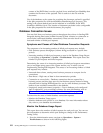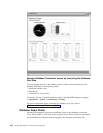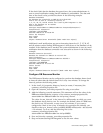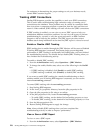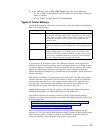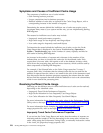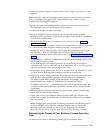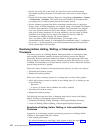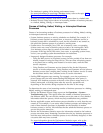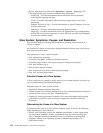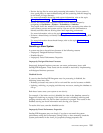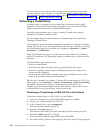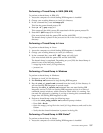For example, when Sterling B2B Integrator is under sufficient load and requires
business processes to be placed in queue, the HTTPSyncSend adapter attempts to
respond with a Message Disposition Notification (MDN). If this is not completed
in a timely manner, the client that initiated the session may release the connection
because of a timeout. If this occurs, the HTTPSyncSend operation appears to
complete successfully by handing off to perimeter servers, but there is a possibility
of the data being dropped.
In this example, the timeout settings in the client can be adjusted to resolve the
problem. Alternatively, the amount of memory available to Sterling B2B Integrator
can be increased to allow the operation to be pulled from the queue and completed
before the timeout occurs.
To increase the amount of memory available to Sterling B2B Integrator, use the
Performance Tuning wizard (Operations > System > Performance > Tuning) and
change the value in the Physical memory (MB) allocated to SI box to a higher
value. For more information about allocating physical memory to Sterling B2B
Integrator, refer to the topic Viewing or Editing Performance Configuration
Settings.
Correcting Out-Of-Memory Errors
Occasionally, a specific operation may require more memory than the current
configuration allocates to Sterling B2B Integrator. For example, with the default
settings, attempting to view a large code list (over 100,000 entries) may result in an
Out-Of-Memory error. This type of error is typically written to the noapp.log file.
To increase the amount of memory available to Sterling B2B Integrator, use the
Performance Tuning wizard (Operations > System > Performance > Tuning) and
change the value in the Physical memory (MB) allocated to SI box to a higher
value. For more information about how to increase the memory available to
Sterling B2B Integrator, refer to the topic Viewing or Editing Performance
Configuration Settings.
Understanding Business Process
You may find that business process execution times are longer than expected,
which might be the result of an increase in volume or improperly written business
processes. This indicates that either the performance does not match your
requirements and corrective action is required, or that you have business processes
containing errors and require manual attention.
The following concepts are explained under this topic:
v Symptoms and Causes of Poor Business Process Execution Time
v Resolving Halted, Halting, Waiting, or Interrupted Business Processes
Symptoms and Causes of Poor Business Process Execution
Time
There are many symptoms and causes of poor business process execution time.
Symptoms of increasing business process execution time include:
v Performance Statistics Report showing the Min (ms), Max (ms), and Average
(ms) time increasing for business processes, activities, and internal system
activities. To access this report, navigate to Operations > System > Performance
> Statistics.
230 Sterling B2B Integrator: Performance Management



